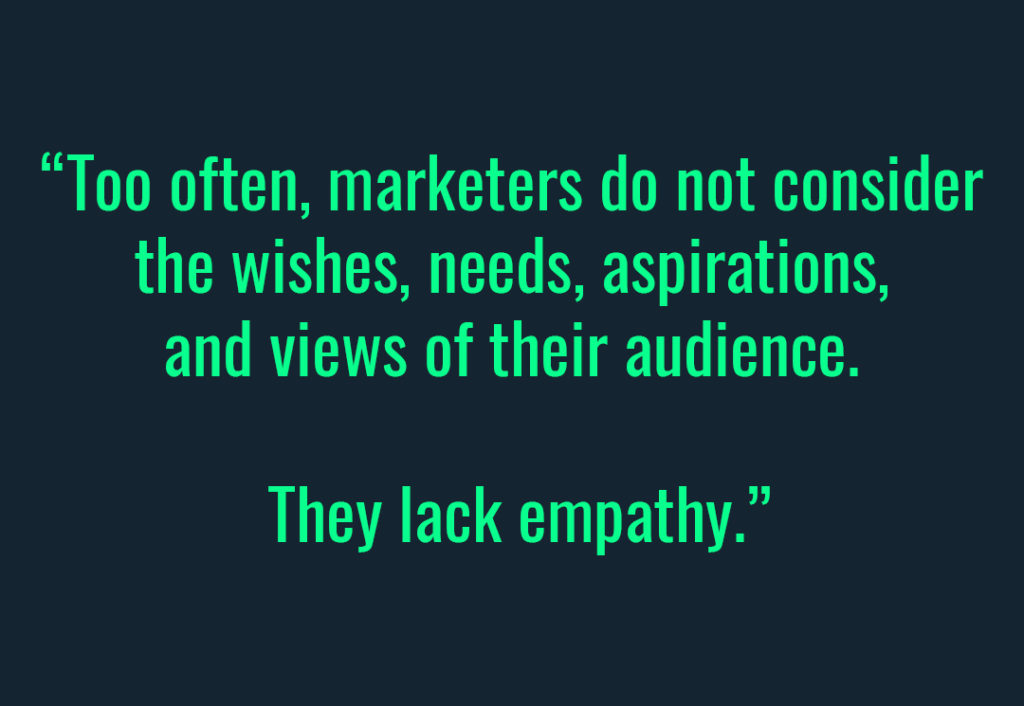Or said differently: are you relevant, here and now?
Too often, marketers, brand managers – and even growth hackers – project their brand and product to the market with statements, claims, missions, visions, etc. that are one-sided. They do not consider the wishes, needs, and views of their audience. They lack empathy. Some other times, they miss part of the equation by emphasizing too much on the audience aspirations (e.g. be better, faster, stronger) and not enough on the utility (e.g. calculate, measure, display, serve, etc.), or the other way round.

To fall into those traps is easy. We know our product in and out. It makes wonders. You need it, just “because” [insert here all good, possibly unique, reasons to purchase]. On top of it, it’s beautiful and does an incredible job. You will feel better with it, and we have a 20% discount if you buy it in the next 2h and 14 minutes. It’s a start, most of it is surely true, but does it resonate with the audience?
4 questions to make sure you’re relevant to your (potential) customers
This is still work in progress – I believe in progress, not perfection after all – but based on multiple things I read and studied recently here is the list of 4 questions I keep asking myself:
- What is the “job to be done” for the audience, what are they trying to achieve *concretely*. This relates to the features of your product, what it does.
- How does your product impact how they are perceived as a professional? Do they gain “coolness points” at work, can it advance their career, make them a thought-leader in their field, etc.
- How does your product impact their personal life? Do you reduce their stress-level, will it bring them more joy in their work, save time so they can go to the gym or spend more time with their family?
- What is their worldview? How do they see the world, what contribution do they want to make to their community and how does your product contributes to these goals? Here an example to make it easy to understand: if your brand projects “power, speed, and luxury”; It is unlikely that someone who thinks the world has to slow down and that we need to adopt more sustainable behaviors will buy from you.
Ask yourself these questions, again, again and again, for each of your audience segments (personas). At least every time you develop something new (content, campaign, etc.). The more you do it, the more you’ll learn, the better you will be… and the more value you’ll bring them.
—
Inspiration & References
This is Marketing: You Can’t Be Seen Until You Learn To See, Seth Godin
Seth Godin is one of the most, if not the most, famous marketing gurus of our time. The Empathy and Worldviews parts of this blog come from him. One of his most famous book is “Permission Marketing” that advocated for marketing that would not be imposed on people but rather being “requested” by them as it would bring them value.
Hubspot Academy
Hubspot Academy is the online training site of Hubspot (my favourite marketing, sales and service software). I recently took their Growth-driven design course and the “job to be done” concept comes from there, even though applied differently. In the Growth-driven design course, you apply the concept of jobs to be done to your website, wondering “what is the job that visitor wants to do when they land on your website”.
